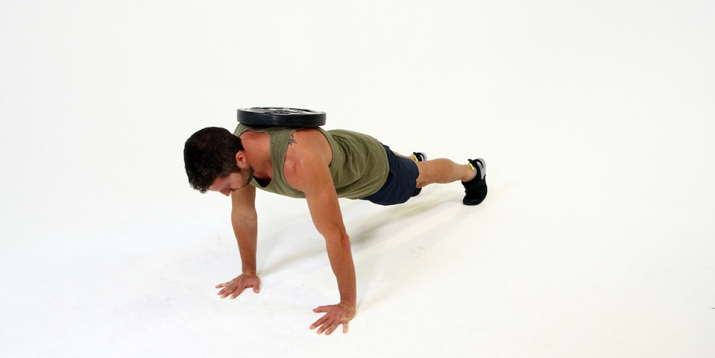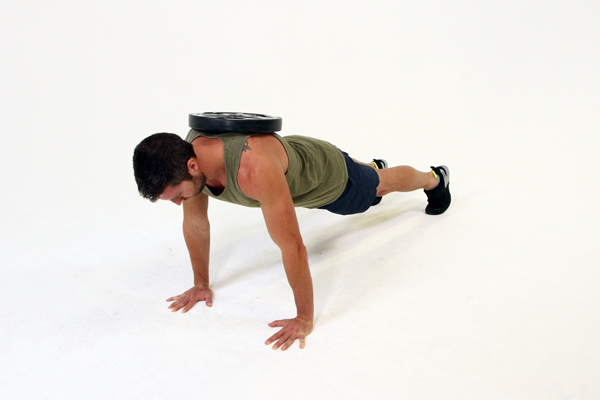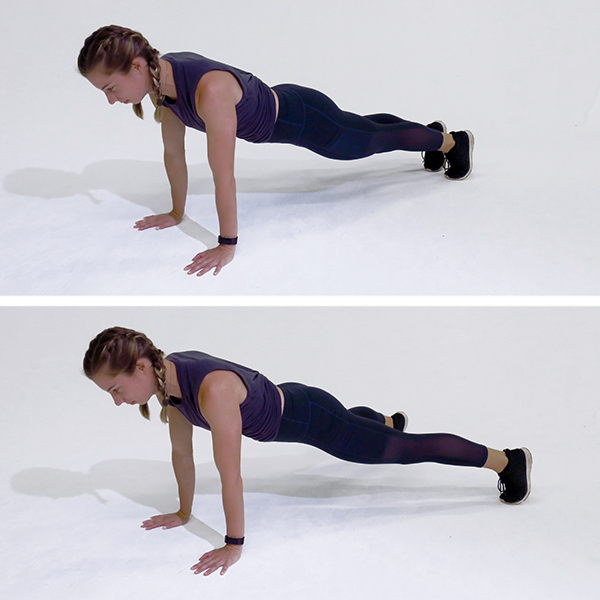
If you’ve mastered the high plank and forearm plank, you might be wondering if there’s some way to make them even more challenging, without adding movement into the mix.
The answer is absolutely yes, thanks to weighted planks.
Sometimes called “loaded planks,” this variation offers a way to increase intensity, according to Aaron Leventhal, CSCS, trainer and owner of Minneapolis-based Fit Studio.
Although it does require extra attention when it comes to setup and safety, taking care to load properly is worth the time.
“By adding weight, your body is under new demands, and it needs to respond by engaging muscles differently, or reacting in ways it hasn’t before with regular planks,” he says. “That definitely keeps it interesting.”
Weighted Plank: Step-by-Step Instructions
- Assume a quadruped, or tabletop, position, getting down on your hands and knees, with your shoulders directly over your wrists and your hips directly over your knees.
- Have a partner carefully place a weight — such as a sandbag or weight plate — squarely on your upper back.
- Keeping your core engaged, slowly extend one leg behind you and then follow with the other, assuming a push-up position. Make sure your body is straight and your head is neutral.
- Maintaining form, come down onto your forearms, stacking your shoulders directly over your elbows.
- Hold until just before you fatigue, and slowly reverse the movement. Have a partner remove the weight.
Benefits of the Weighted Plank
Why do a weighted plank instead of simply holding a bodyweight plank longer? Here’s why.
- Builds more strength, where longer bodyweight planks build endurance.
- Allows you to target different muscle groups based on placement of the load.
- Can improve posture and form in other exercises thanks to added core strength.
Exercises Related to the Weighted Plank
Even if you’re eager to grab a weight for your next plank, it’s a good idea to work up to the move. Make sure you can do at least 60 perfect seconds of the standard version, and that you’re also able to do some plank variations.
- Plank to low squat: The second phase of a burpee adds a plyometric component to the base plank, building lower-body strength and cardiovascular capacity, at the right intensities.
- Plank Jack: Performed quickly enough, you can also make the plank a cardio move by jumping your feet out and back.
- Side Planks: Work more oblique and abductor strength by turning the plank on its side.
- Spiderman Plank: Give your medial glutes additional work by adopting the wallcrawler’s signature knee-to-elbow move.



